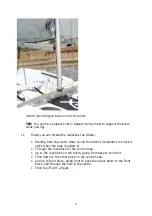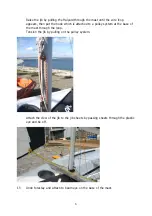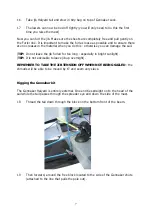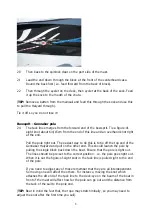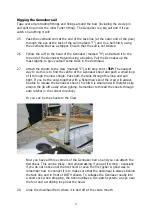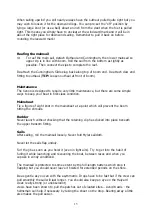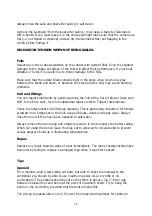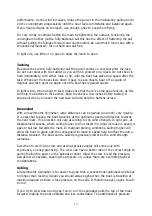
16
Always rinse the sails and boat after sailing in salt water.
Remove the Gennaker from the boat after sailing - mice have a taste for Gennakers
left in boats! If you must leave it in the chute overnight make sure that the corners are
flat (i.e. not folded or crushed). Always dry the Gennaker flat (not flapping in the
wind!) before folding it.
RELEASE JIB TENSION WHEN NOT BEING SAILED.
Foils
Repair any nicks or deep scratches on the rudder with gelcoat filler. Even the slightest
damage to the shape or surface of the foils will affect their performance. If your boat
vibrates or hums it is usually due to minor damage to the foils.
Make sure that the rudder blade remains tight in the stock when down. Any play
between the blade and stock, or between the stock and the hull, may cause steering
problems.
Hull and fittings
You can repair small dents by gently warming the hull with a hot air blower (take care
NOT to melt the hull); for more substantial repairs refer to Topper International.
Check the attachments of all fittings regularly. This is particularly important for fittings
screwed on to fixings set in the hull. Keep all blocks, cleats and ropes clean. Always
rinse them out if they have been exposed to salt water.
Always remove the drain plug and empty any water in the buoyancy tank after sailing.
When not using the Xenon leave the plug out to allow air to circulate and to prevent
excess pressure build-up in fluctuating temperatures.
Ropes
Replace any ropes showing signs of wear immediately. Too many championships have
been lost by failing to replace a damaged rope when it was first noticed!
Tips
Upwind
For a medium wind (crew sitting out hard, but able to sheet the mainsail to the
centreline) you should be able to use maximum power. Use very little or no
cunningham. The outhaul should be set so that there is about a 3in (7-8cm) gap
between mainsail foot and boom at the point of maximum chord. Try to keep the
boom on the centreline, provided that the boat remains flat.
The jib can be eased about 1-2in (5-10cm) from maximum tightness for optimum


